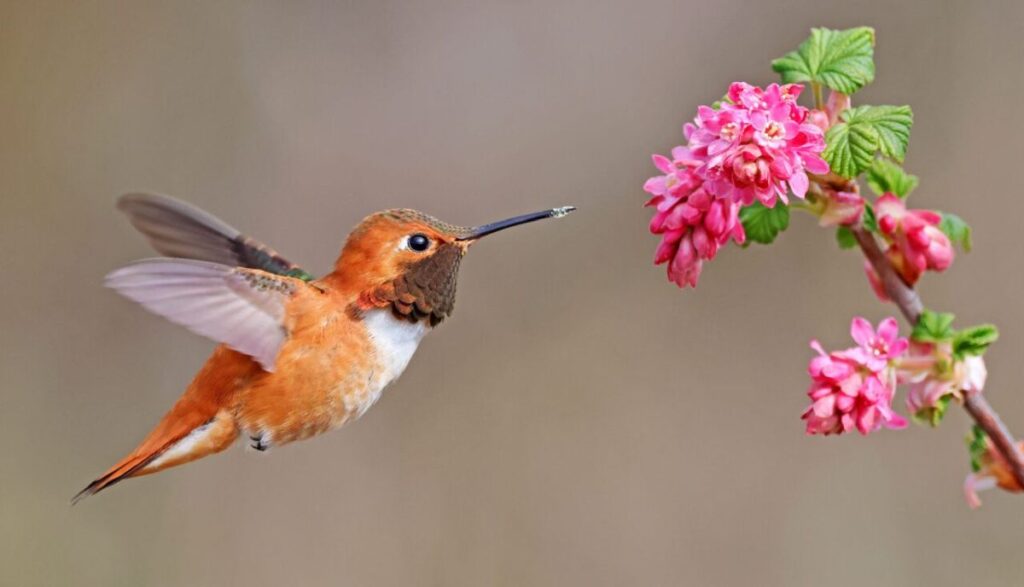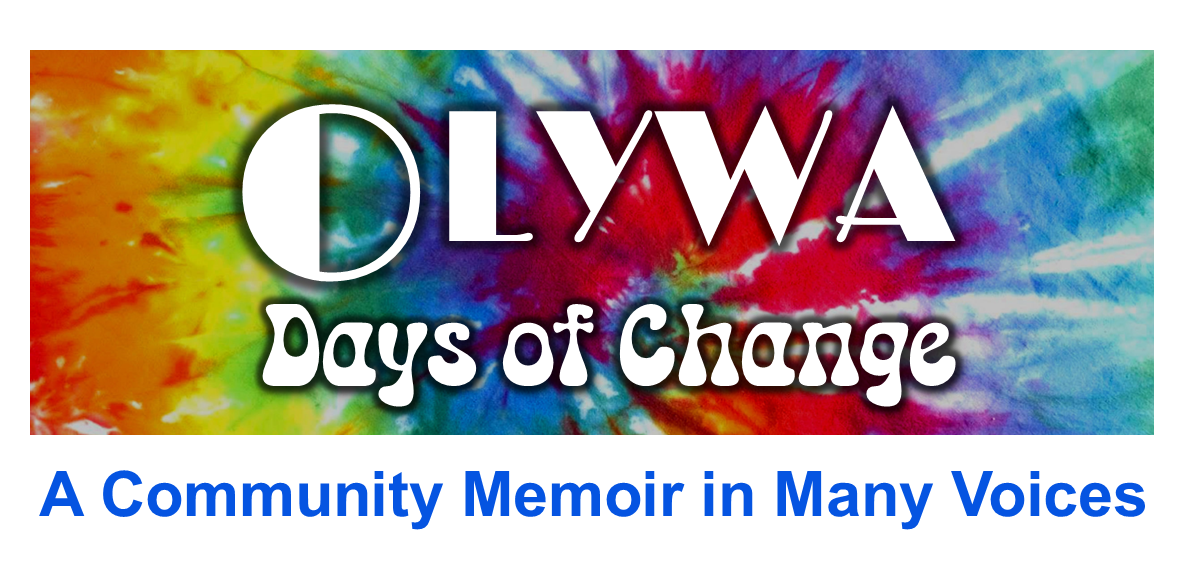FIRST PEOPLES
The Best Job I Ever Manifested Had Nothing to Do with Money
By Jan Cyr
Like many of us here in Olympia, I am an Evergreen State College graduate. During my final year of studies, I had the great good fortune to be invited to the Lummi Smoke House to film the naming ceremony of Mary Hillaire.This was the first film I recorded sound for. It changed my life forever. I knew immediately I wanted to continue on in the film business, which I did for the majority of my life. I specialized in films for and about Indigenous peoples all over the world. I traveled with many production companies all through the United States as well as Zimbabwe, Trinidad and Tobago, and Mexico. One of my favorite productions was for the Smithsonian when they opened the Museum of Native Americans.
After retiring from the film business it felt like I should find a way to give back. I explored a few private volunteer organizations but didn’t find the right fit. I was living on a little farm in Thurston County and several of my friends and elders suggested that I should put together something for the people right here where I live. Once that realization settled in, things unfolded quickly.
I woke up early one morning and as I stepped onto my front porch I saw a giant canvas bag with a very sharp draw knife sitting on the top. To my amazement it was a twenty-four-foot Crow tipi left by an elder who apparently had a clearer vision then I. Erecting the tipi led to the formation of a large community right here on Four Winds Farm. I spent many days peeling lodge poles with the draw knife and oiling them. Before I knew it, the lodge was erected! Then the question was: what will take place in this beautiful space? I knew that it was for the gathering of women of all ages and nations. I also knew it needed to have a name.
Soon hummingbirds started arriving and flying very close. Also eagles were circling and one even dropped a feather! It occurred to me that women are like hummingbirds in a way, because they are seldom seen just being still. Our tipi was a place to come and be still. Hence the name Hummingbird Stands Lodge was born.

In a way, all of this was the easy part. Now, how was I going to invite interested women to arrive? I had a nice painting of a hummingbird so I turned it into a flier and began posting it here and there. The first gathering was just three women. Over the years that followed, there were over seven hundred women who stepped into our lodge, which so amazes me, looking back on it. The only reason I know the number is that we kept a ledger.
Our community gathered year-round at 7:00 p.m. during full moons. There was a big stone fire pit in the middle of the circle, around which were many chairs draped with Pendleton blankets. It was important to me that everyone felt welcome and was comfortable. Sometimes there would be young women with little babies, sometimes elders. There was a great diversity of people who came. We always started our evenings by introducing ourselves. I was simply the hostess welcoming those present. Next we would sing and drum. We always opened and closed the lodge with four songs. We considered this a type of prayer or at least a reverence for the beauty of nature around us. We used a “talking stick.” Only the person holding the stick had the floor. Some of the women had much to say. Others would simply hold the stick in silence. After a while I realized that often the things we shared were in sync with one another’s issues. There was much laughter and many tears. We came to realize the sacredness of our thoughts and insights and the importance of knowing “what was shared in the lodge stayed in the lodge.” We were community of all ages, all nations, all equal.
Our ever-changing and expanding community also collaborated on many workshops, events, and guest speakers. One of my favorite events was Christmas time. We made a connection with the local school’s counselors to find a family in need. We all chipped in and provided food, gifts, and a Christmas tree.
There were so many guest speakers over the years! Robert Greygrass called himself a “Comedi-jun,” and had us all in stitches with his stories. Bernice Crow Foot Falling Leaves enchanted us with her global travel stories. Ed McGa, an Oglala Sioux, came from Pine Ridge, South Dakota twice to share his stories. He had written dozens of books and was such a great storyteller we were all glued to his every word. Margaret Behan, a Cheyenne woman was one of the thirteen Indigenous Global Grandmothers. When she came we knew there would be a huge audience so the ninety or so guest in attendance made a circle on the lawn around a fire to hear her wisdom’s that were based on the equality of women AND men.
We also hosted Coleen Jollie (Turtle Mountain Chippewa), Rangi Harvey (Maori), Elaine Grinnell (Jamestown S’klallam), Che ok’ ten/Paul Wagner (Saanich Northwest Coast Salish), Geoge Amiotte (Lakota Sioux), Elaine McCloud (Chehalis), Thomas One Wolf (Suquamish), Chholing Taha (Cree/Iroquois), Roderick Harris (Nooksak), Harvest Moon (Quinault), and Sam Watson-Alvan (Peru), among others.
We were fortunate to organize a myriad of workshops as well. One of the most poignant was a three part series on addiction and codependency. The workshop was led by three speakers, each of whom had had various dependencies but became clean and sober. One of our most enjoyable and creative workshops was led by Lois Chichinoff Thadei (Aleut). She carried the Aleut weaving way and was also very skilled as a cedar weaver. The cedar weaving began by harvesting, peeling and drying the cedar in preparation for weaving. I’ll always remember us gathering around my kitchen table with cedar bits everywhere. I made a “cowgirl” style hat that I still love wearing for special occasions.
Hummingbird Stands Lodge remained standing for fourteen years. It concluded on the day my son left this world.
About a year before that I could feel the tipi would come down in a natural way. For many who had made it a large part of their lives and looked forward to attending each month, I knew it could be a challenging transition. I started suggesting early on that if there was a song they hadn’t been committed to memory, now was the time to do so. Or if there was a part of a story that anyone wanted to know more about in order to carry it forth, just ask. It was time to reiterate and hold onto what was important to each of us. I trusted that whoever wanted could always keep these ways and maybe erect their own lodge, conduct their own coming-of-age naming ceremonies and such.
There were endless things that I was blessed to be a part of while I was guardian of Hummingbird Stands Lodge, which I hold close to my heart even now. I will always remember walking out to the tipi from my home and seeing it glowing from the fire at the center like an enormous lantern, the smoke streaming out from the open flaps welcoming us all to her warmth, as if time had stopped somehow.
I share this for all my relations.
Janis J. Cyr
My grandfather, Ronald Cyr’s people were French/Cree from Quebec. My grandmother, Alma Daisy Satterfield was Nez Perce, French, and Irish from Kamiah, Idaho. I have lived here in the Great Pacific Northwest between the Salish Sea and Mount Tahoma all of my life. I feel honored to live here on land that has always been inhabited by the coastal tribes. I lived on 80 acres when I was a young single mother near the Nisqually tribe and later in life I had a home on Suquamish land.
We encourage readers to use the form below to make comments and suggestions. Disclaimer
